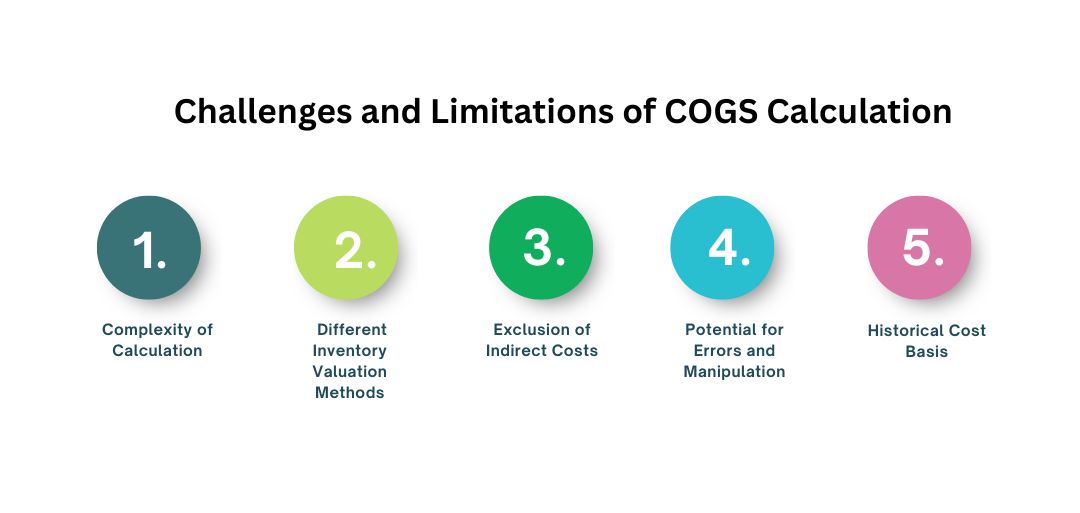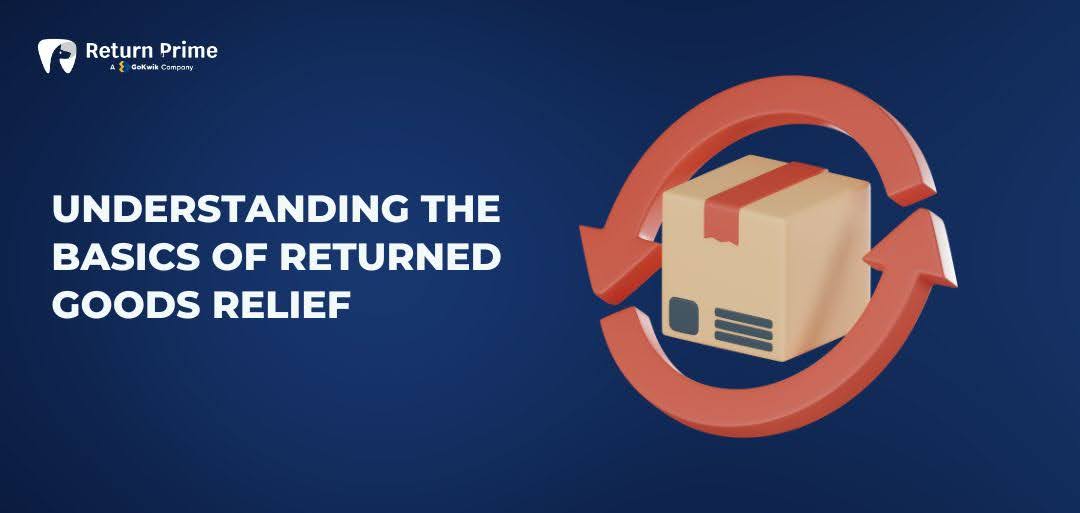How to Calculate Cost of Goods Sold Using COGS Formula


Is your business really profitable? Many entrepreneurs focus on sales but often overlook a critical number: Cost of Goods Sold (COGS). If you’re not tracking COGS, you might think your profits are strong when in reality, you could be missing out.
COGS tells you exactly how much it costs to produce or purchase the products you sell, covering everything from raw materials to labor. Understanding this number is key to setting the right prices, cutting unnecessary expenses, and boosting your profits.
The best part? Calculating COGS is simple. With the right formula, you can quickly determine this essential figure and make smarter business decisions. In this blog, we’ll break down the COGS formula, explain how it impacts your profits, and show you how to use it to optimize your business’s financial health. Let’s get started!
What is the Cost of Goods Sold (COGS)?
Cost of Goods Sold, or COGS, is a crucial figure in inventory accounting. It represents the direct costs associated with producing the goods a business sells during a specific period. This includes everything from raw materials to labor directly involved in making the product.
COGS consists of three main components:
- Direct Materials: These are the raw materials used to create the product. For example, if you’re making furniture, the wood, nails, and varnish would all be considered direct materials.
- Direct Labor: This includes the wages of employees who are directly involved in manufacturing the goods. If workers are assembling products or operating machinery, their salaries fall under direct labor costs.
- Manufacturing Costs: These costs encompass any other expenses directly tied to production. This could include factory utilities or equipment depreciation that relates specifically to the manufacturing process.
NOTE: COGS does not include indirect costs. These are expenses not directly tied to production but are still necessary for running a business. For instance:
- Marketing Costs: Expenses related to advertising and promoting products do not factor into COGS.
- Administrative Costs: Salaries for office staff or expenses for general office supplies also fall outside of COGS.
By excluding these indirect costs, businesses can focus on the direct expenses involved in creating their products.
COGS vs. Operating Expenses
Cost of Goods Sold (COGS) and Operating Expenses are two key financial metrics, but they refer to different aspects of a business’s financial performance.
Here is a brief comparison between COGS and Operating Expenses:


In essence, COGS relates to the production process, while operating expenses are broader costs to run the company.
Are you struggling to manage returns and their impact on your COGS? Return Prime helps you centralize returns, exchanges, and refunds for better tracking and profitability.
Understanding COGS helps you see the true cost of running your business. Now that you know why it matters, let’s look at the formula to calculate it.
The COGS Formula
Calculating the Cost of Goods Sold (COGS) is straightforward with the right formula. The basic equation is:

To use the COGS formula effectively, you need three key inputs:
- Beginning Inventory: Gather data on your inventory at the start of the accounting period. This figure sets the stage for your calculations.
- Purchases and Production Costs: Keep track of all costs related to new inventory or production during the period. This includes invoices for purchased materials and labor costs.
- Ending Inventory: At the end of your accounting period, assess what remains unsold. This will help you determine how much product was available for sale.
With these inputs, you can calculate COGS accurately, providing valuable insights into your business’s financial health. Now, let’s go through the step-by-step process of calculating COGS accurately.
Steps to Calculate COGS

Calculating the Cost of Goods Sold (COGS) is essential for understanding your business's financial performance. Here’s a straightforward guide to help you through the process.
Step 1: Identify Direct and Indirect Costs
First, distinguish between direct and indirect costs. Direct costs are expenses that can be directly linked to producing your goods. This includes:
- Raw materials
- Direct labor (wages for workers who make the product)
- Manufacturing overhead (costs directly tied to production)
Indirect costs, on the other hand, are not directly tied to production. These include:
- Marketing expenses
- Administrative salaries
- Rent and utilities
Only direct costs will be included in your COGS calculation.
Step 2: Choose an Inventory Valuation Method
Next, decide which inventory valuation method you will use. The main options are:
- FIFO (First In, First Out): Assumes the oldest inventory is sold first.
- LIFO (Last In, First Out): Assumes the newest inventory is sold first.
- Weighted Average Cost: Averages the cost of all inventory items.
Each method affects your profits and taxes differently, so choose one that aligns with your business strategy.
Step 3: Calculate Beginning Inventory and Cost of Purchases
Now, find your beginning inventory. This is the value of unsold goods from the previous period. Then, determine the total cost of purchases made during the period, including:
- Costs of raw materials
- Shipping fees
- Any discounts received
Make sure to add these costs together to get a clear picture of your total purchases.
Step 4: Determine the Ending Inventory
At the end of the accounting period, assess how much inventory remains unsold. This is your ending inventory. You can find this by conducting a physical count or using inventory management software.
Step 5: Apply the COGS Formula
Finally, use the COGS formula to calculate your total cost of goods sold:
COGS=(Beginning Inventory+Purchases)−Ending Inventory
This formula will give you a clear understanding of how much it costs to produce the goods you sold during that period.
By following these steps you can effectively calculate your business's cost of goods sold.
Now that we've covered the steps to calculate the Cost of Goods Sold (COGS), let's look at some examples to see how these calculations work in practice.
Also Read: The Hidden Costs of Inefficient Returns: Why Upgrading Your System Pays Off
Examples of COGS Calculation
Here are two detailed examples of Cost of Goods Sold (COGS) calculation for a retail store and a manufacturing business:
1. Example 1: Retail store's COGS calculation
A retail store buys and sells electronics. Let's assume the following data for the store:
- Beginning Inventory (at the start of the period): $50,000
- Purchases (inventory bought during the period): $30,000
- Ending Inventory (unsold inventory at the end of the period): $20,000
COGS Formula:
COGS = Beginning Inventory + Purchases − Ending Inventory
Calculation:
COGS = 50,000 + 30,000 − 20,000
COGS = 60,000
Thus, the Cost of Goods Sold for the retail store is $60,000.
2. Example 2: Manufacturing business COGS calculation
A manufacturing company produces furniture. Below are the given values:
- Raw Materials Inventory (Beginning): $20,000
- Raw Materials Purchased: $50,000
- Raw Materials Inventory (Ending): $15,000
- Direct Labor Costs: $25,000
- Factory Overhead Costs: $10,000
- Work in Process Inventory (Beginning): $5,000
- Work in Process Inventory (Ending): $8,000
- Finished Goods Inventory (Beginning): $12,000
- Finished Goods Inventory (Ending): $10,000
COGS Calculation in Steps:
- Direct Materials Used:
Direct Materials Used = Raw Materials Inventory (Beginning) + Raw Materials Purchased − Raw Materials Inventory (Ending)
= 20,000 + 50,000 − 15,000
= 55,000
- Total Manufacturing Costs:
Total Manufacturing Costs = Direct Materials Used + Direct Labor + Factory Overhead
= 55,000 + 25,000 + 10,000 = 90,000
- Total Cost of Work in Progress (WIP):
Total WIP = Total Manufacturing Costs + Beginning WIP Inventory − Ending WIP Inventory
= 90,000 + 5,000 − 8,000 = 87,000
- Costs of Goods Manufactured (COMG):
COGM = Total WIP
= 87,000
- Final COGS Calculation:
COGS = COGM + Beginning Finished Goods Inventory − Ending Finished Goods Inventory
= 87,000 + 12,000 − 10,000
COGS = 89,000
Thus, the Cost of Goods Sold for the manufacturing business is $89,000.
With these COGS examples in mind, let's now explore different inventory valuation methods and how they impact financial reporting and decision-making.
Inventory Valuation Methods

How you value your products can make a big difference in managing your inventory. There are three main methods: FIFO, LIFO, and Weighted Average Cost. Each method has its own way of calculating costs and can affect your profits and taxes. Let’s explore each one in detail.
- FIFO (First In, First Out
With FIFO, you sell your oldest items first. This straightforward method works well for businesses with perishable goods, like food. It reflects how most people think about selling their products.
Impact:
- Profitability: In times of rising prices, FIFO usually shows higher profits since older, cheaper costs are matched against current sales.
- Tax Liability: Higher profits mean you might pay more in taxes. However, your ending inventory will appear more valuable because it consists of newer items.
- LIFO (Last In, First Out)
Now, think about selling your newest stuff first. That's LIFO. It can help lower your taxes when prices are going up. This method can be useful for businesses that want to match current costs with their sales.
Impact:
- Profitability: During inflation, LIFO often results in lower profits because you’re matching higher recent costs against sales.
- Tax Liability: Lower profits can lead to lower taxes, which benefits cash flow. But remember that your ending inventory may look outdated and less valuable.
- Weighted Average Cost
The Weighted Average Cost method takes all your inventory costs and averages them out. This gives you a single cost per item that you use for both COGS and ending inventory.
Impact:
- Profitability: This method tends to provide moderate profit figures since it smooths out price fluctuations.
- Tax Liability: Your tax situation will be steady, as the average cost doesn’t swing dramatically like FIFO or LIFO.
Understanding these methods can help you manage your finances better and make informed choices for your business's future!
After exploring how COGS is calculated, it's important to understand why accurately tracking these costs matters.
Want to know more about maximizing revenue through smart exchange strategies? Click Here!
Benefits of Accurate COGS Calculation
Getting COGS right helps a business understand its costs, set the right prices, and track profits. It can make a big difference in day-to-day operations and long-term success when done correctly. Here are five key benefits.
1. Better Profit Tracking
COGS shows how much money a business spends to produce or sell its products. With accurate numbers, a business can see if it’s making enough profit or if costs are eating into earnings.
2. Smarter Pricing Decisions
Knowing COGS helps set prices that cover costs and bring in profit. If prices are too low, the business might lose money. If they’re too high, customers may go elsewhere.
3. Improved Inventory Management
Accurate COGS helps track how much inventory costs over time. This prevents overstocking, understocking, and wasting money on items that don’t sell.
4. More Accurate Financial Reports
COGS affects key financial statements like income statements and tax filings. Mistakes in COGS can lead to incorrect reports, which can cause problems with planning, budgeting, and even taxes.
5. Easier Tax Deductions
Businesses can deduct COGS from revenue to lower taxable income. Accurate COGS ensures the right deductions, avoiding overpayment or issues with tax authorities.
Calculating the Cost of Goods Sold (COGS) helps businesses determine their profits and track expenses. But calculating COGS isn’t always easy. There are a few challenges that can make it tricky. Let’s take a look at some common issues businesses face when working out COGS.
Challenges and Limitations of COGS Calculation

Calculating the Cost of Goods Sold (COGS) is important for businesses. However, it comes with some challenges. Here’s a breakdown of the main issues:
1. Complexity of Calculation
Calculating COGS can be more complicated than it looks. Businesses need to track different types of inventory. This includes raw materials, work-in-progress items, and finished goods. Each type requires careful attention.
If a company has a large inventory of many products, it gets even harder. Keeping accurate records is crucial. Without a good system, mistakes can happen easily.
2. Different Inventory Valuation Methods
There are several ways to value inventory, like FIFO (First In, First Out) and LIFO (Last In, First Out). Each method gives different COGS results. This can create confusion when comparing companies.
For example, one company might show higher profits using FIFO during inflation, while another using LIFO could report lower profits. These differences make it tough to see which company is doing better.
3. Exclusion of Indirect Costs
COGS only looks at the direct costs of making products, like materials and labor. It does not include indirect costs, such as marketing or administrative expenses. This means COGS may not fully represent a company's expenses. If businesses only focus on COGS, they might misunderstand their true profitability.
4. Potential for Errors and Manipulation
Calculating COGS is prone to errors. Mistakes in counting inventory or reporting purchases can lead to big problems in financial reports. Some businesses might even try to manipulate their COGS numbers to look better financially. This can mislead investors and stakeholders about how healthy the company really is. If caught, this can lead to serious consequences.
5. Historical Cost Basis
COGS is based on historical costs, which might not match current market prices. During inflation or fast market changes, the cost to replace inventory can be much higher than what’s recorded in the books. This can cause businesses to underestimate their current profitability. It can also lead to poor pricing decisions.
Tired of the complexities and potential errors in COGS calculation due to returns? Return Prime offers automated solutions and data-driven insights to minimize errors and improve accuracy. Explore the benefits now!
Do you know you can improve customer retention by setting up a good return policy? Click here to know more.
How does Return Prime Help?
Managing returns efficiently is a big part of keeping COGS accurate. Returns, exchanges, and refunds all impact inventory and cost calculations. If not handled properly, they can distort financial reports, affect profit margins, and create operational headaches. Return Prime (with a 4.9/5 rating) helps Shopify stores simplify return management while keeping COGS in check. Here’s how:
1. Centralized Return Management
Return Prime consolidates all return, exchange, and refund processes into one platform. This centralization allows merchants to track the costs associated with returned items easily. By having a clear view of returns, businesses can adjust their COGS calculations to reflect the impact of these returns on overall profitability.
2. Upselling to Offset Return Losses
With the Wonder Revenue Booster, brands can upsell products when customers request a return. This helps recover lost revenue and reduces the financial hit from returned items.
3. Store Credits Instead of Refunds
The Wonder Promotions tool encourages customers to take store credit instead of a cash refund. This keeps money within the business, reduces revenue loss, and maintains accurate inventory valuation.
4. Promoting Exchanges Over Returns
Using Wonder Smart Exchange, brands can encourage customers to swap products instead of returning them. This helps retain revenue while keeping inventory and COGS calculations stable.
5. Automating Return Processing
The Wonder Bot Automation handles returns, exchanges, and refunds automatically. This reduces errors in inventory tracking, ensuring that returned items are correctly accounted for in COGS.
6. Custom Return and Exchange Policies
Businesses can set up custom return rules, ensuring better inventory flow and reducing unnecessary losses. This makes COGS tracking more predictable and consistent.
7. Seamless Integration with Other Platforms
Return Prime integrates with logistics providers and accounting systems, ensuring that all return-related data syncs smoothly. This prevents mismatched inventory records and incorrect COGS calculations.
8. Data-Driven Insights for Better Decisions
With analytics and ROI tools, merchants can track return patterns and their financial impact. This helps optimize COGS by adjusting pricing, return policies, and inventory strategies.
9. Multilingual Support for a Global Audience
Return Prime offers multilingual support for brands selling internationally, making return processes smoother across different markets. This ensures consistent COGS tracking, no matter where customers are.
Return Prime helps businesses reduce return-related losses, improve inventory accuracy, and keep COGS calculations precise. By turning returns into new opportunities, brands can improve profits while providing a smooth return experience for customers.
Wrapping Up
Accurate COGS calculation is crucial for any business to understand its financial performance. It helps determine profitability, set appropriate pricing, and manage inventory effectively. With the right formula and valuation methods, businesses can track direct costs, optimize tax deductions, and make smarter financial decisions.
By properly calculating COGS, companies avoid costly mistakes and pave the way for sustainable growth and a healthier bottom line. Remember, the clarity you gain from COGS will guide every aspect of your business strategy.
Ready to take control of your returns process and see how it directly impacts your bottom line? Discover how our solution can streamline your returns, improve inventory accuracy, and optimize your COGS. Click here to book your demo and start turning returns into revenue!







.svg)


.svg)

